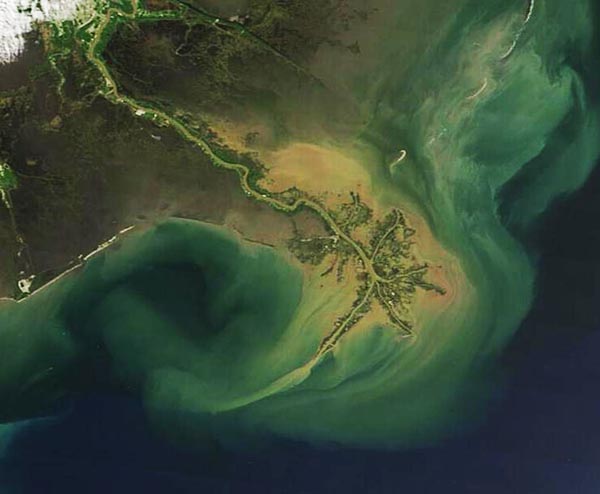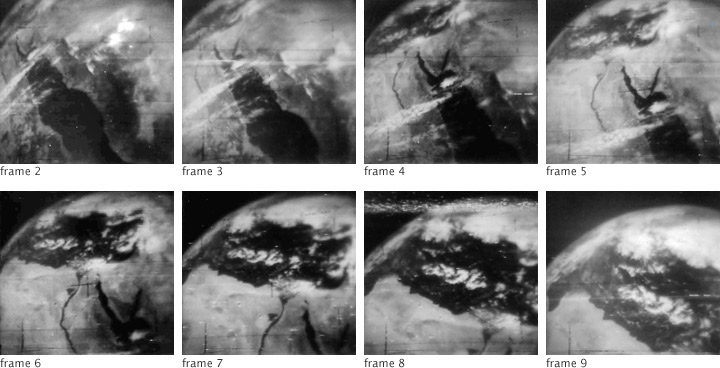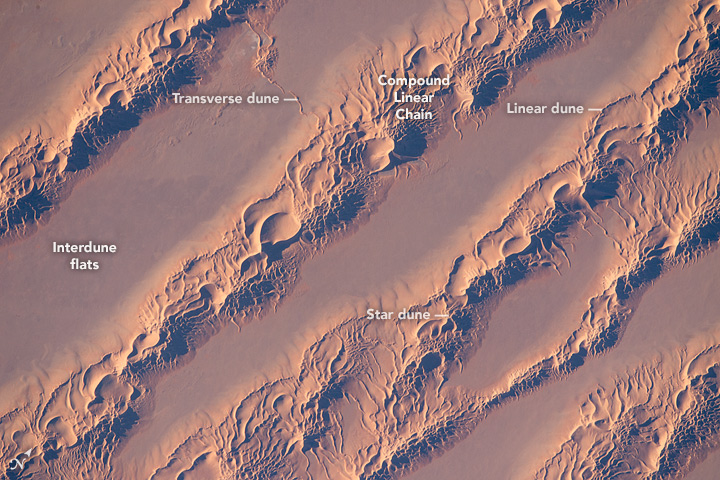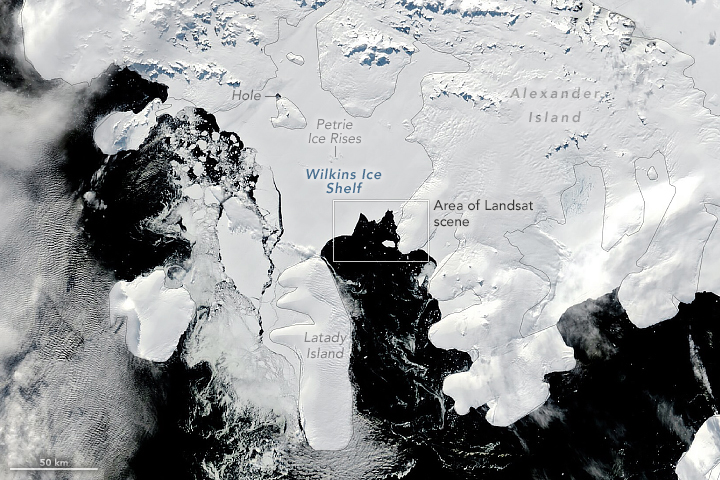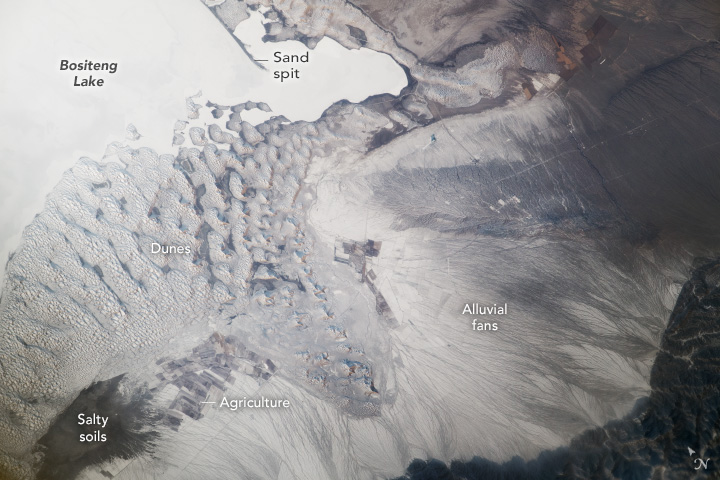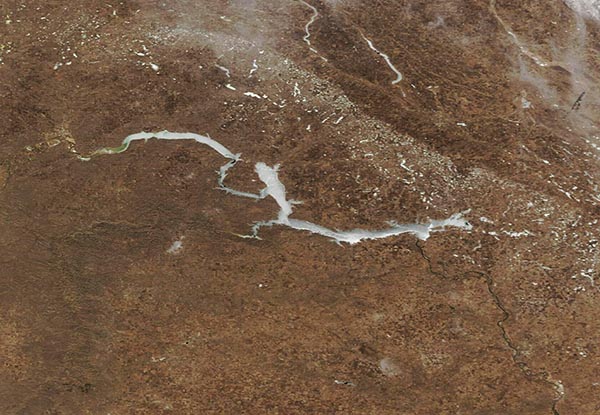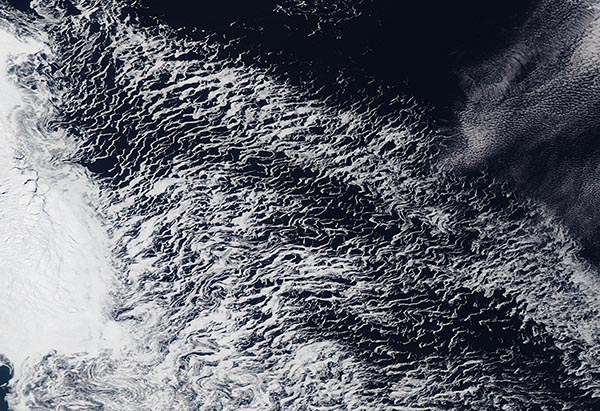Page 1 of 18
Weather history miscellany
Posted: Mon Apr 01, 2024 1:03 pm
by Randi
https://www.weather.gov/abr/This_Day_in ... ory_Apr_01
1960: The first weather satellite, TIROS 1 (Television and Infra-Red Observation Satellite) began sending pictures back to Earth. The TIROS series would have little benefit to operational weather forecasters because the image quality was low and inconsistent. The most critical understanding achieved from the new technology was the discovery of the high degree of organization of large-scale weather systems, a fact never apparent from ground and aircraft observations.
Re: Weather history miscellany
Posted: Mon Apr 01, 2024 1:26 pm
by Randi
Re: Weather history miscellany
Posted: Tue Apr 02, 2024 1:59 pm
by Randi
https://www.weatherforyou.com/weather_history/4-2
1982 - Severe thunderstorms spawned fifty-six tornadoes in the central U.S., including seventeen in the Red iver Region of Texas and Oklahoma. The tornadoes claimed thirty lives, and injured 383 other persons. A violent tornado near Messer OK left only the carpet tack strips on the slab of a house it destroyed, and carried a motel sign thirty miles. (The Weather Channel) (Storm Data)
1988 - Thunderstorms produced up to nine inches of rain around New Orleans LA causing 18 million dollars damage. A tornado caused three million dollars damage at Slidell LA. (Storm Data) (The National Weather Summary)
1990 - Thunderstorms produced severe weather in North Carolina and Virginia during the afternoon and evening. Thunderstorms produced golf ball size hail, and spawned a tornado near Chester VA which caused half a million dollars damage. A storm system produced snow and gale force winds across northern Michigan, with 8.3 inches of snow reported at Marquette. Temperatures in the north central U.S. soared from morning lows in the 20s and 30s to afternoon highs in the 60s and 70s. Eight cities reported record highs for the date, including Havre MT with a reading of 77 degrees. (The National Weather Summary) (Storm Data)
2006 - Tornadoes and hail as big as softballs ripped through eight Midwestern states, killing at least 27 people, injuring scores and destroying hundreds of homes. In Tennessee, tornadoes killed 23 people, including an infant and a family of four. Severe thunderstorms, many producing tornadoes, also struck parts of Iowa, Kentucky, Arkansas, Missouri, Ohio, Illinois and Indiana. Strong wind was blamed or at least three deaths in Missouri. The weather service's Storm Prediction Center in Norman, Okla., said it had preliminary reports of 63 tornadoes. The worst damage occurred throughout the Tennessee Valley.
Re: Weather history miscellany
Posted: Tue Apr 02, 2024 2:13 pm
by Randi
Re: Weather history miscellany
Posted: Wed Apr 03, 2024 2:41 pm
by Randi
https://www.weather.gov/abr/This_Day_in ... ory_Apr_03
1898: An avalanche near Chilkoot Pass, Alaska in the Yukon during the Gold Rush buried 142 people and killed 43 others.
1964: KAUZ in Wichita Falls, Texas broadcast the first live television pictures of an F5 tornado moving through the city. Seven people were killed, 111 injured and 225 homes were destroyed during the twisters 5 to a 6-mile path. Extensive damage was done at Sheppard Air Force Base where three tanker planes, a hanger, the power plant, and the chapel were all destroyed. Damage estimates exceeded $15 million. Click
HERE to see the broadcast from KAUZ.
1974: A "Super-Outbreak" of tornadoes ravaged the Midwest and the eastern U.S. Severe weather erupted early in the afternoon and continued through the next day. Severe thunderstorms spawned 148 tornadoes from Alabama to Michigan, most of which occurred between 1 PM (CST) on the 3rd and 1 AM on the 4th. The tornadoes killed 315 persons, injured 5300 others, and caused 600 million dollars damage. Alabama, Kentucky, and Ohio were especially hard hit in the tornado outbreak. One tornado destroyed half of the town of Xenia, Ohio killing 34 persons. Another tornado, near the city of Stamping Ground, Kentucky produced a path of destruction a record five miles in width. A tornado raced through Guin, Alabama at a speed of 75 mph. Two powerful tornadoes roared across northern Alabama during the early evening hours, killing fifty persons and injuring 500 others. Some rescue vehicles responding to the first tornado were struck by the second.
Re: Weather history miscellany
Posted: Wed Apr 03, 2024 2:49 pm
by Randi
Re: Weather history miscellany
Posted: Thu Apr 04, 2024 1:10 pm
by Randi
https://www.weather.gov/abr/This_Day_in ... ory_Apr_04
1804: A group of tornadoes slashed a 120-mile path across seven counties in Georgia and one county in South Carolina killing 11 people near Augusta, GA. The tornado's path through heavy timber was still visible some 71 years later as noted in an Army Signal Corps survey.
1966: One of the strongest tornadoes in Florida's history moved in from the Gulf of Mexico and ripped through Pinellas, Hillsborough, Polk, and Osceola County. Damage was very severe in the towns of Gibsonia and Galloway in Polk County. 11 people were killed, and 350 were injured. The tornado was classified as F4.
Re: Weather history miscellany
Posted: Thu Apr 04, 2024 1:15 pm
by Randi
Re: Weather history miscellany
Posted: Fri Apr 05, 2024 1:48 pm
by Randi
https://www.weatherforyou.com/weather_history/4-5
1972 - A tornado, 500 yards wide at times, touched down at a marina on the Oregon side of the Columbia River, and then tore through Vancouver WA killing six persons, injuring 300 others, and causing more than five million dollars damage. It was the deadliest tornado of the year, and the worst of record for Washington. (The Weather Channel)
1982 - An unprecedented April blizzard began in the northeastern U.S. One to two feet of snow fell across Massachusetts and Connecticut, and up to 26 inches was reported in Maine. New York City received a foot of snow. Winds reached 70 to 80 mph during the storm, and the storm also produced numerous thunderstorms, which contributed to the heavy snow. (Storm Data)
1988 - Thirty-nine cities across the eastern half of the country reported record high temperatures for the date, including Saint Louis MO with a reading of 91 degrees. Laredo TX was the hot spot in the nation with an afternoon high of 100 degrees. (The National Weather Summary)
1990 - Afternoon and evening thunderstorms developing along a cold front produced severe weather in southern Oklahoma, southern Arkansas, and north central and northeastern Texas. Thunderstorms spawned a dozen tornadoes in Texas, including one at Fort Worth which caused a million dollars damage. There were nearly one hundred reports of large hail and damaging winds. Thunderstorms in Texas produced hail three and a half inches in diameter west of Fort Worth, and produced wind gusts to 80 mph at Cross Plains. (The National Weather Summary) (Storm Data)
Re: Weather history miscellany
Posted: Fri Apr 05, 2024 2:07 pm
by Randi
Re: Weather history miscellany
Posted: Sat Apr 06, 2024 1:25 pm
by Randi
https://www.weatherforyou.com/weather_history/4-6
1936 - A tornado outbreak in the Deep South resulted in a total of 446 deaths and eighteen million dollars damage. It was a "Tale of Two Cities". During the evening of the 5th a tornado hit Tupelo MS killing 216 persons, injuring 700 others, and causing three million dollars damage. The next morning the paths of two tornadoes met about 8:30 AM and cut a swath four blocks wide through Gainesville GA killing 203 persons, injuring 934, and causing thirteen million dollars damage. Eight to ten feet of debris filled the streets following the storm. At least 70 persons died in the Cooper Pants Factory, the greatest tornado toll of record for a single building. (David Ludlum) (The Weather Channel)
1988 - A powerful storm produced wind gusts to 75 mph around Chicago, IL, and wind gusts to 92 mph at Goshen IN. The high winds created twenty-five foot waves on Lake Michigan. (Storm Data) (The National Weather Summary)
1990 - Snow developed in the northeastern U.S. for the second time in the month. In Virginia, a heavy wet snow blanketed northern and central sections of the Shenandoah Valley, and eastern foothills, with up to 12 inches reported around Harrisonburg. Heavy snow also blanketed the high elevations of West Virginia, with 10 inches reported at Snowshoe. An inch of snow at Syracuse NY raised their total for the winter season to a record-tying 161.3 inches. (The National Weather Summary) (Storm Data)
Re: Weather history miscellany
Posted: Sat Apr 06, 2024 1:46 pm
by Randi
Re: Weather history miscellany
Posted: Sun Apr 07, 2024 12:49 pm
by Randi
https://www.weather.gov/abr/This_Day_in ... ory_Apr_07
1926: Lightning started a disastrous oil fire at San Luis Obispo, California, which lasted for five days, spread over 900 acres, and burned over six million barrels of oil. Flames reached 1000 feet, and the temperature of the fire was estimated at 2,500 degrees. The fire spawned thousands of whirlwinds with hundreds the size of small tornadoes. One vortex traveled one mile to the east-northeast of the blaze, destroying a small farmhouse and killing two people. Damage totaled $15 million.
1948: Six tornadoes ripped through Northern Illinois and Indiana; mainly across the southern and eastern suburbs of Chicago. The hardest hit was from a tornado that moved east from near Manteno, IL to near Hebron, Indiana. This storm left four people dead; three in Grant Park, IL and one near Hebron, IN with 67 injuries and over a million dollars damage. Other strong tornadoes in the area moved from near Coal City, IL to Braidwood, IL and from Calumet City, IL into Indiana. Further south, two strong tornadoes occurred across the northern parts of Champaign and Vermilion Counties in Illinois.
1980: Severe thunderstorms spawned tornadoes that ripped through central Arkansas. The severe thunderstorms also produce high winds and baseball size hail. Five counties were declared disaster areas by President Carter. A tornado causing F3 damage also affected St. Louis and St. Charles counties in Missouri producing $2.5 million in damage. Click
HERE for a radar video of the F2 tornado that cut a path from near Mayflower to the north of Beebe, Arkansas. The radar video is courtesy of the NWS Office in Little Rock, Arkansas.
2010: The record heat that affected the region on April 6-7 included 93 degrees at the Washington-Dulles Airport on April 6, the earliest 90-degree reading on record. On April 7, Newark, New Jersey, shattered its daily record by seven degrees when the maximum temperature rose to 92 degrees. The Northeast ended up with its second warmest April in 116 years.
Re: Weather history miscellany
Posted: Sun Apr 07, 2024 12:57 pm
by Randi
Re: Weather history miscellany
Posted: Mon Apr 08, 2024 1:35 pm
by Randi
https://www.weatherforyou.com/weather_history/4-8
1926 - The lightning-set oil depot fire near San Luis Obispo CA boiled over and engulfed 900 acres. Many tornado vortices resulted from the intense heat of the fire. One such tornado traveled 1000 yards, picked up a house and carried it 150 feet, killing the two occupants inside. (The Weather Channel)
1988 - Strong northerly winds ushered cold air into the north central U.S. The strong winds, gusting to 60 mph at Rapid City SD and Williston ND, reduced visibilities in blowing dust over the Dakotas. (The National Weather Summary) (Storm Data)
1990 - Twenty-two cities reported record low temperatures for the date as readings dipped into the 20s and 30s across much of the eastern U.S. Freezing temperatures severely damaged peach and apple orchards in West Virginia, where prolonged mild weather since January had caused an early blooming of spring vegetation. State and Federal agencies estimated a 50 percent loss in production for peaches and "Delicious Red Apples". (The National Weather Summary) (Storm Data)
Re: Weather history miscellany
Posted: Mon Apr 08, 2024 1:55 pm
by Randi
Re: Weather history miscellany
Posted: Tue Apr 09, 2024 1:39 pm
by Randi
https://www.weatherforyou.com/weather_history/4-9
1988 - Residents of Sioux City, IA, awoke to find two inches of snow on the ground following a record high temperature of 88 degrees the previous afternoon. (The National Weather Summary)
1990 - Thunderstorms developing ahead of a cold front produced severe weather from the Central High Plains to Arkansas and northern Texas. Severe thunderstorms spawned five tornadoes, and there were seventy reports of large hail and damaging winds. A tornado injured four persons at Ardmore OK, and thunderstorms produced wind gusts to 70 mph at Kellyville OK, and hail three inches in diameter at Halmstead KS. (The National Weather Summary) (Storm Data)
Re: Weather history miscellany
Posted: Tue Apr 09, 2024 1:49 pm
by Randi
Re: Weather history miscellany
Posted: Wed Apr 10, 2024 2:34 pm
by Randi
https://www.weatherforyou.com/weather_history/4-10
1894 - A heavy late season snow blanketed parts of the northeastern U.S. Heavier snowfall totals included 31.5 inches at Salem Corners PA, 30 inches at LeRoy NY, 26 inches at York PA, 14 inches at Waterbury CT, and 9 inches at Providence RI. (The Weather Channel)
1988 - Unseasonably warm weather prevailed in the western U.S. Eleven cities reported new record high temperatures for the date, including Bakersfield CA with a reading of 95 degrees, their warmest for so early in the season. Pocatello ID warmed from a record low of 19 above to an afternoon high of 63 degrees. (The National Weather Summary)
Re: Weather history miscellany
Posted: Thu Apr 11, 2024 2:11 pm
by Randi
https://www.weather.gov/abr/This_Day_in ... ory_Apr_11
1988: Sixteen cities in the western U.S., nine in California, reported new record high temperatures for the date. Afternoon highs of 95 degrees at Sacramento and 96 degrees at Bakersfield, California were the warmest of record for so early in the season.
2012: The deluge began around 3:30 a.m. Over the next few hours, fast-moving hailstones pummeled the area north of Amarillo, Tex., which had lately been sitting in dust due to a lack of precipitation, according to the news organization. The hail mixed with melting hail turning the dust to mud and the mix create four-foot high mounds that shut down a major highway for the next 18 hours.
